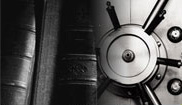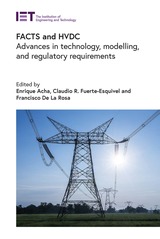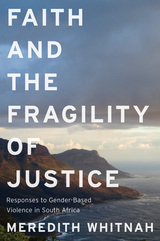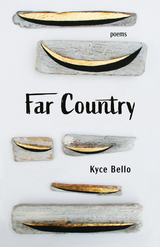5 books about Lachs, John

Mind and Philosophers
John Lachs
Vanderbilt University Press, 1987
The essays collected in this volume and written between 1959-1980 clearly belong to professional philosophy in both tone and context. Yet their ultimate aim is to explore larger problems and to set the groundwork for dealing with them. For the focus of attention throughout is human nature, not so much in the details of its structure or its social and moral manifestations as in its most general features and constituents. What sort of beings we are and how mind and body are related is the question at the very core of all inquiries into human nature.
[more]

Physical Order and Moral Liberty
Previously Unpublished Essays of George Santayana
George Santayana
Vanderbilt University Press, 1969
This book is a collection of fifty-five essays and fragments by George Santayana, from the Santayana collections of the Columbia University Library and the Humanities Research Center at the University of Texas.
Although the essay included are largely philosophical in nature, none is narrowly technical. The general reader should be able to understand most of the pieces, as well as enjoy their literary quality and profit by the insights and wisdom they provide. The philosopher may draw courage from the speculative spirit of the essays and benefit by Santayana's steadfast vision and his sensitivity to distinctions.
For the serious student of Santayana's thought, this volume will prove indispensable. It contains sustained philosophical studies of causation (the only ones by Santayana anywhere), substantial elaborations of Santayana’s ideas on the relation of sensation to thought, and reflections on the nature of freedom and the spiritual life. In addition, Santayana develops here a new theory of “critical instants” and elaborates on his ideas of the nature of consciousness and its relations to time.
Sections on the philosophy of nature and the philosophy of mind are followed by groups of essays on ethics, the philosophy of politics, and the freedom of mind—in which, according to Santayana, the blessing of the good life consists. The book concludes with brief notes on Bergson, Democritus, and Leibniz and a longer essay on the thought of Vaihinger.
Although the essay included are largely philosophical in nature, none is narrowly technical. The general reader should be able to understand most of the pieces, as well as enjoy their literary quality and profit by the insights and wisdom they provide. The philosopher may draw courage from the speculative spirit of the essays and benefit by Santayana's steadfast vision and his sensitivity to distinctions.
For the serious student of Santayana's thought, this volume will prove indispensable. It contains sustained philosophical studies of causation (the only ones by Santayana anywhere), substantial elaborations of Santayana’s ideas on the relation of sensation to thought, and reflections on the nature of freedom and the spiritual life. In addition, Santayana develops here a new theory of “critical instants” and elaborates on his ideas of the nature of consciousness and its relations to time.
Sections on the philosophy of nature and the philosophy of mind are followed by groups of essays on ethics, the philosophy of politics, and the freedom of mind—in which, according to Santayana, the blessing of the good life consists. The book concludes with brief notes on Bergson, Democritus, and Leibniz and a longer essay on the thought of Vaihinger.
[more]

The Relevance of Philosophy to Life
John Lachs
Vanderbilt University Press, 1995
With The Relevance of Philosophy to Life, eminent American philosopher John Lachs reminds us that philosophy is not merely a remote subject of academic research and discourse, but an ever-changing field which can help us navigate through some of the chaos of late twentieth-century living. It provides a clear-eyed look at important philosophical issues--the primacy of values, rationality and irrationality, society and its discontents, life and death, and the traits of human nature--as related to the human condition in the modern world.
[more]

Thinking in the Ruins
Wittgenstein and Santayana on Contingency
Michael P. Hodges
Vanderbilt University Press, 2000
While Ludwig Wittgenstein (1889-1951) and George Santayana (1863-1952) may never have met or even have studied one another's work, they experienced similar cultural conditions and their thinking took similar shapes. Yet, until now, their respective bodies of work have been examined separately and in isolation from one another.
Santayana is often regarded as an aesthetician and metaphysician, but Wittgenstein's work is usually seen as antithetical to the philosophical approaches favored by Santayana. In this insightful new study, Michael Hodges and John Lachs argue that behind the striking differences in philosophical style and vocabulary there is a surprising agreement in position. The similarities have largely gone unnoticed because of their divergent styles, different metaphilosophies, and separate spheres of influence. Hodges and Lachs show that Santayana's and Wittgenstein's works express their philosophical responses to contingency. Surprisingly, both thinkers turn to the integrity of human practices to establish a viable philosophical understanding of the human condition.
Both of these important twentieth-century philosophers formed their mature views at a time when the comfortable certainties of Western civilization were crumbling all around them. What they say is similar at least in part because they wished to resist the spread of ruin by relying on the calm sanity of our linguistic and other practices. According to both, it is not living human knowledge but a mistaken philosophical tradition that demands foundations and thus creates intellectual homelessness and displacement. Both thought that, to get our house in order, we have to rethink our social, religious, philosophical, and moral practices outside the context of the search for certainty. This insight and the projects that flowed from it define their philosophical kinship.
Thinking in the Ruins will enhance our understanding of these monumental thinkers' intellectual accomplishments and show how each influenced subsequent American philosophers. The book also serves as a call to philosophers to look beyond traditional classifications to the substance of philosophical thought.
Santayana is often regarded as an aesthetician and metaphysician, but Wittgenstein's work is usually seen as antithetical to the philosophical approaches favored by Santayana. In this insightful new study, Michael Hodges and John Lachs argue that behind the striking differences in philosophical style and vocabulary there is a surprising agreement in position. The similarities have largely gone unnoticed because of their divergent styles, different metaphilosophies, and separate spheres of influence. Hodges and Lachs show that Santayana's and Wittgenstein's works express their philosophical responses to contingency. Surprisingly, both thinkers turn to the integrity of human practices to establish a viable philosophical understanding of the human condition.
Both of these important twentieth-century philosophers formed their mature views at a time when the comfortable certainties of Western civilization were crumbling all around them. What they say is similar at least in part because they wished to resist the spread of ruin by relying on the calm sanity of our linguistic and other practices. According to both, it is not living human knowledge but a mistaken philosophical tradition that demands foundations and thus creates intellectual homelessness and displacement. Both thought that, to get our house in order, we have to rethink our social, religious, philosophical, and moral practices outside the context of the search for certainty. This insight and the projects that flowed from it define their philosophical kinship.
Thinking in the Ruins will enhance our understanding of these monumental thinkers' intellectual accomplishments and show how each influenced subsequent American philosophers. The book also serves as a call to philosophers to look beyond traditional classifications to the substance of philosophical thought.
[more]

A William Ernest Hocking Reader
with Commentary
John Lachs
Vanderbilt University Press, 2004
Leading Harvard philosophy professor William Ernest Hocking (1873-1966), author of 17 books and in his day second only to John Dewey in the breadth of his thinking, is now largely forgotten, and his once-influential writings are out of print. This volume, which combines a rich selection of Hocking's work with incisive essays by distinguished scholars, seeks to recover Hocking's valuable contributions to philosophical thought.
[more]
READERS
Browse our collection.
PUBLISHERS
See BiblioVault's publisher services.
STUDENT SERVICES
Files for college accessibility offices.
UChicago Accessibility Resources
home | accessibility | search | about | contact us
BiblioVault ® 2001 - 2025
The University of Chicago Press









